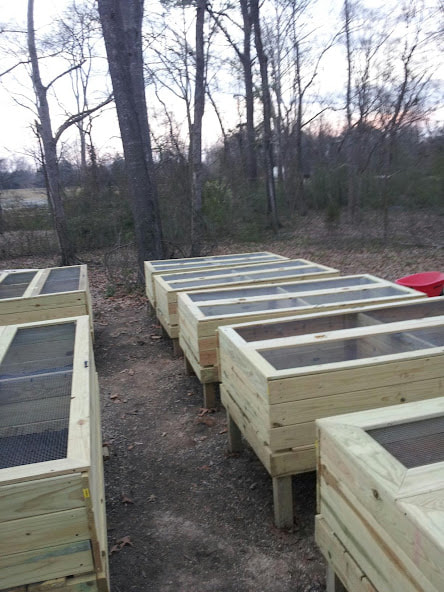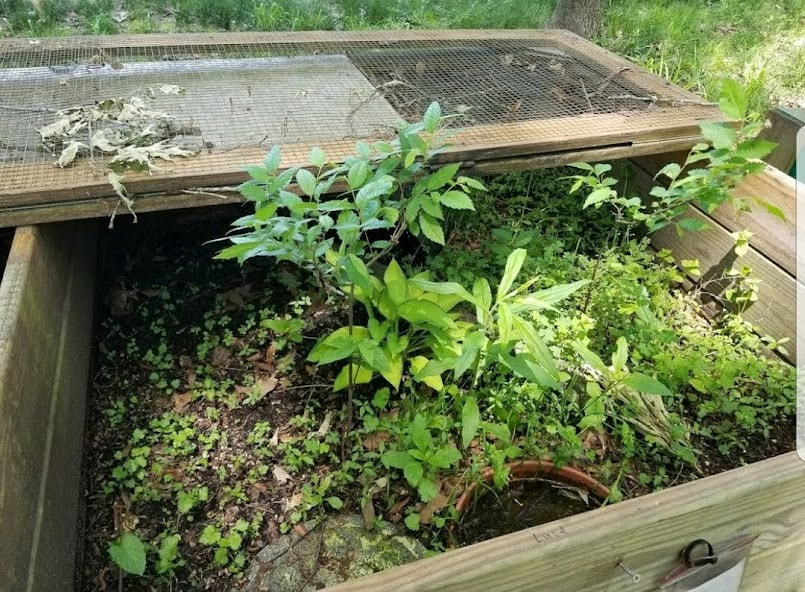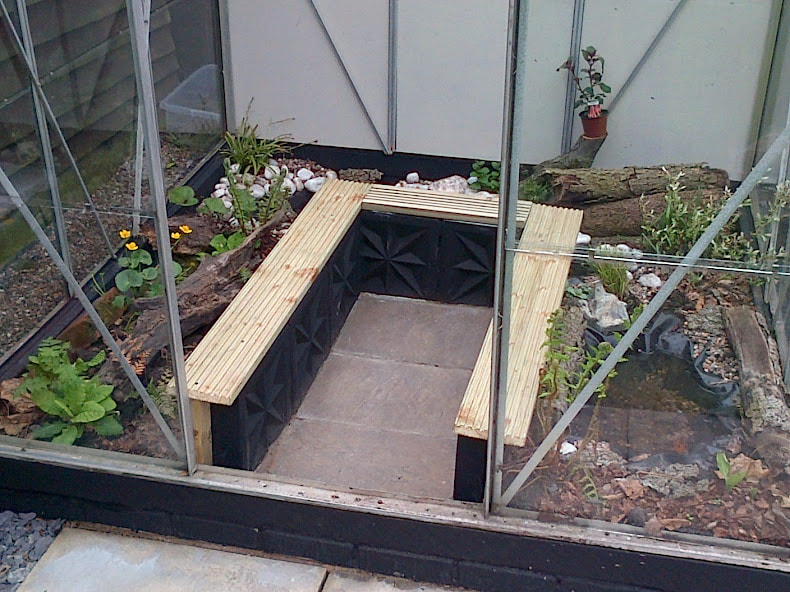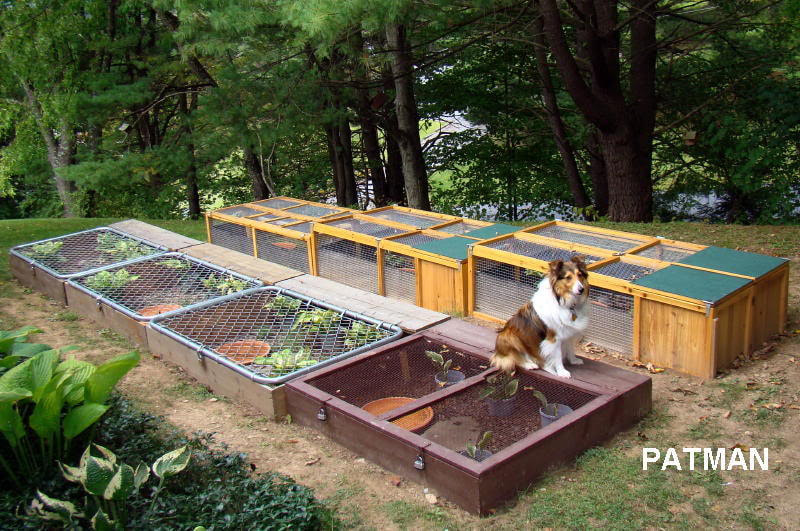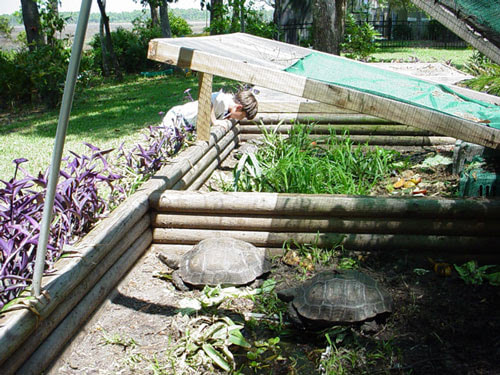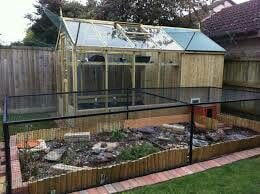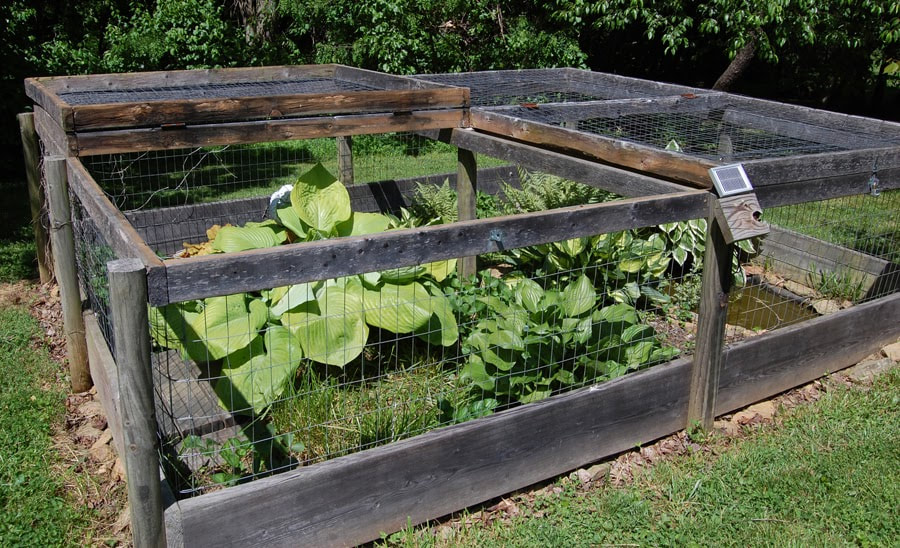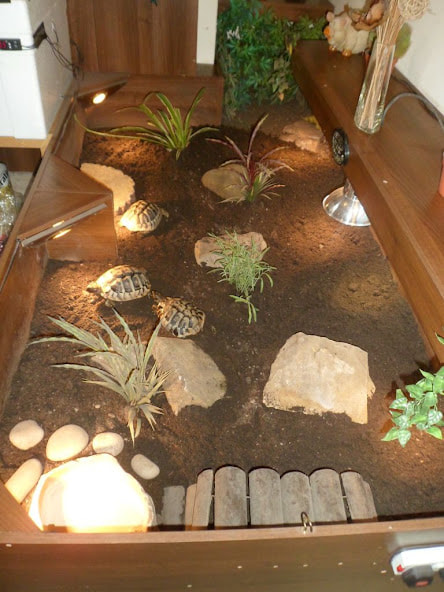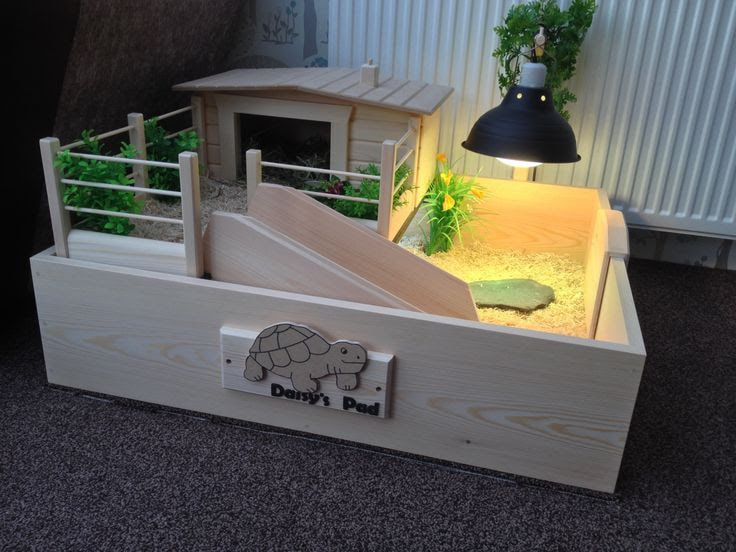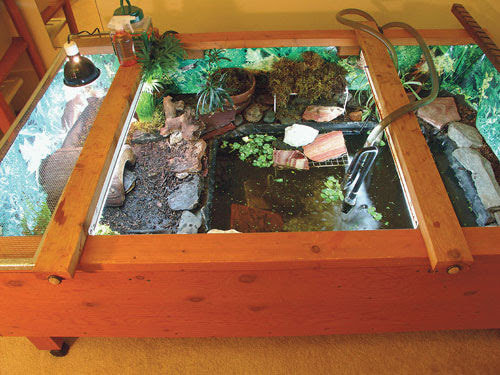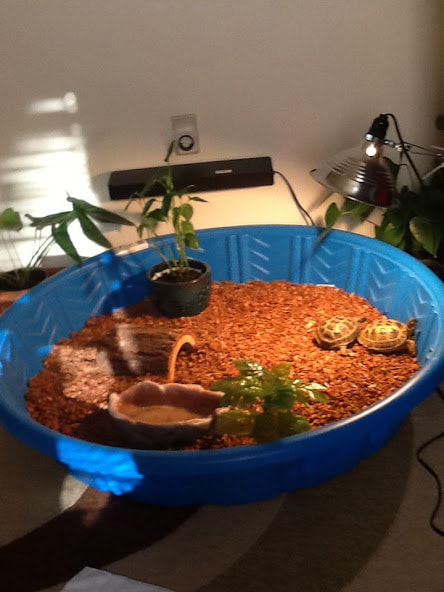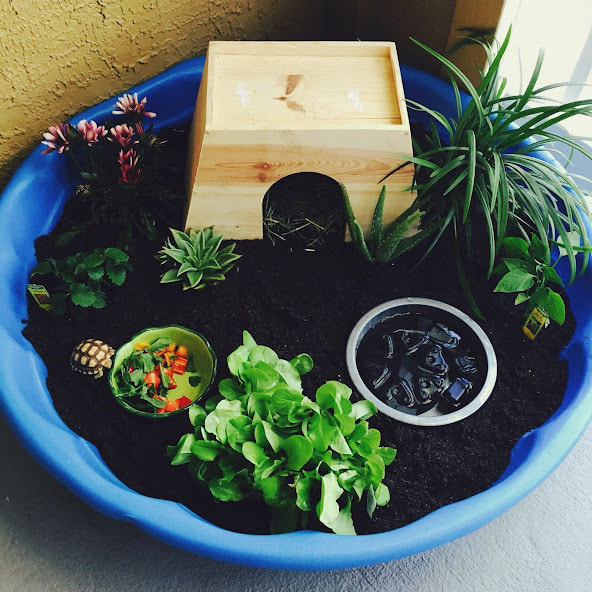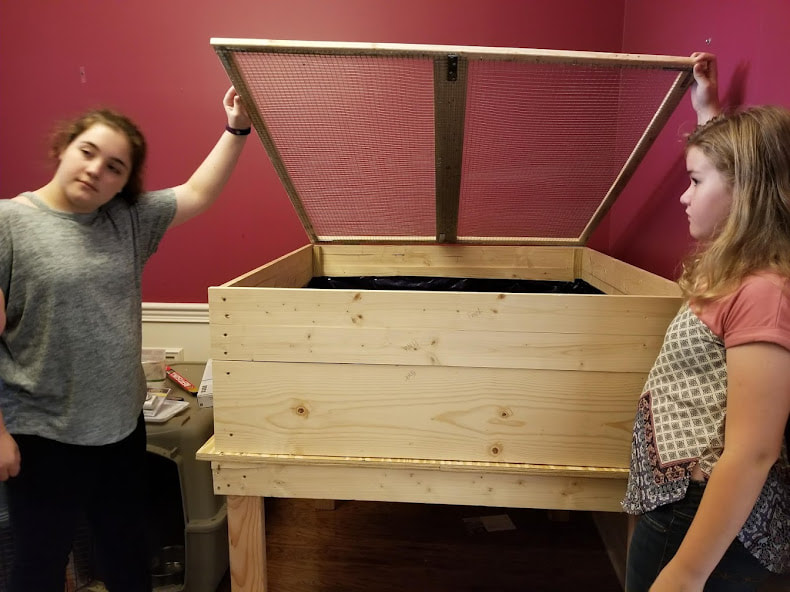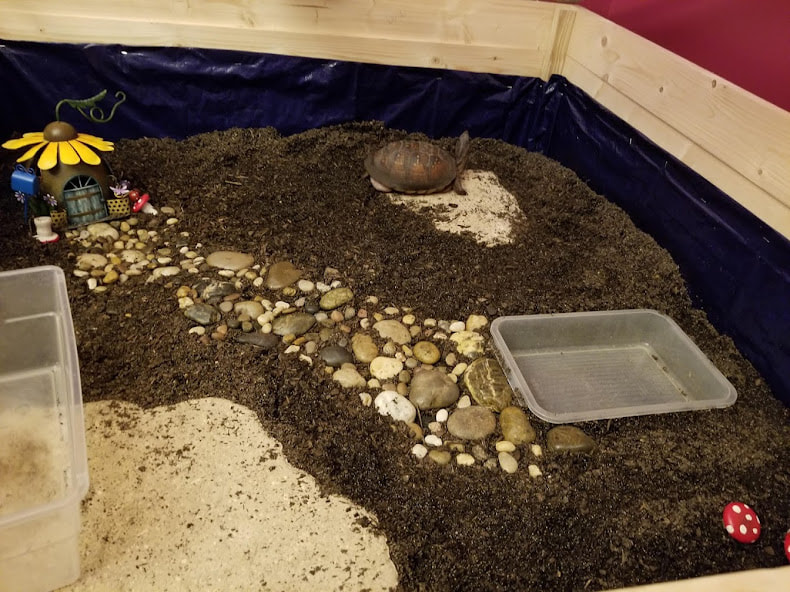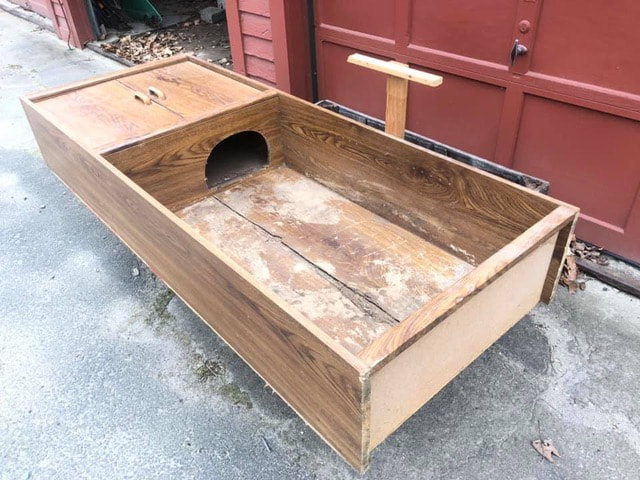Outdoor Box Turtle Habitats
The following guidance applies to adult box turtles. If housing juveniles, considerations will be made based on their smaller size; however, adopter must demonstrate ability and willingness to upgrade and expand habitat once the turtle reaches adulthood.
- Housing can be multi-level; however, any ramps to higher levels must be completely enclosed so that there is no chance that the turtle could fall over the side
- Walls must be a material that can’t be seen through (i.e. NO chain link or wire)
- If fire ants are a major concern, enclosure must be built above ground
- Shade and fresh water must be provided at all times.
- The enclosure must be allowed to drain so that it doesn’t flood in rain.
- Enclosure must be 100% escape-proof. The turtles we adopt out are not releasable and should never be allowed to wander off from their home into the wild. This could mean the slow death of the turtle, transmission of disease to wild turtles, or the introduction/propagation of non-native species.
- Must provide predator protection on all sides and overhead. Examples of acceptable predator protection include:
- Locking wire/screen lid
- Combination of multiple methods, including: sonic deterrents, light deterrents, electric fencing, motion activated cameras with alarms and/or motion activated sprinkler systems.
- Males must be housed alone – OR with at least 3 females. If housing with females, we must pre-approve your plan for eventual offspring. We do NOT adopt turtles for the purpose of using them as breeding stock.
- Turtles are NOT social creatures and do not enjoy being kept together. Fighting, even between females, can occur. You must have an adequate plan in place for separating this turtle from the other(s) at the first sign of aggression, bullying, or intimidation.
- Substrate must be plain dirt, moss or mulch. Absolutely no chemicals, fertilizers, pesticides, herbicides, etc. Watch out for terms like "organic". Manure is organic but can cause severe eye and skin issues.
Examples of acceptable outdoor enclosures are below.
Indoor Box Turtle Habitats
The following guidance applies to adult box turtles. If housing juveniles, considerations will be made based on their smaller size; however, adopter must demonstrate ability and willingness to upgrade and expand habitat once the turtle reaches adulthood.
- NO glass (or other see-through) tanks!!!
- Walls must be a material that can’t be seen through (i.e. NO chain link or wire)
- Housing can be multi-level; however, any ramps to higher levels must be completely enclosed so that there is no chance that the turtle could fall over the side.
- Enclosure must be escape-proof. It can be very difficult to find a lost turtle in your home and can be very dangerous for the turtle.
- Turtle must be protected completely from children or other pets in the home. To that end, the turtle should either be housed in a room to itself with no access by children or other pets, or the enclosure should have a secure, locking screen lid.
- Males must be housed alone – OR with at least 3 females. If housing with females, we must pre-approve your plan for eventual offspring. We do NOT adopt turtles for the purpose of using them as breeding stock.
- Turtles are NOT social creatures and do not enjoy being kept together. Fighting, even between females, can occur. You must have an adequate plan in place for separating this turtle from the other(s) at the first sign of aggression, bullying, or intimidation.
- Must provide adequate UVB lighting (changed every 12 months)
- Must provide adequate heat lamps (absolutely NO under-“tank” heat such as heating pads or rocks.)
- Must provide a soaking water dish that the turtle can easily (and without fear of turning over) get in and out of. Water must cleaned and refreshed daily.
- Must provide humidity. This can easily be accomplished by spraying the enclosure daily with water.
- Must provide a hide. These can be created using plant pots, half logs, etc. Something the turtle can get into to feel secure.
- Substrate should be plain top soil (no chemicals, fertilizers, manures, herbicides, etc.) We will also accept Eco Earth or a mixture of soil and Eco Earth.
- Baby box turtles should be fed every day. Adults should be fed every 2-3 days. Dark leafy greens and cuttlebone can be given between feedings. A list of recommended foods can be provided.
Please note that glass tanks are never recommended for box turtles. There are several reasons for this:
- It is very difficult, if not impossible, to provide and maintain the correct heat gradient and humidity levels for box turtles in glass tanks.
- Box turtles get very stressed if they can be seen. They are loners and hiders. Being on display is stressful to them and can cause a myriad of health and psychological concerns.
- Box turtles that can see a reflection of themselves in a shiny surface may think the reflection is another turtle. We have seen severe nose and beak damage from turtles fighting the "other turtle" in their enclosure.
Examples of acceptable indoor enclosures are below.
